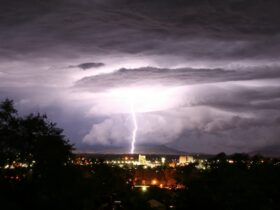In a cosmic neighborhood not too far from our own, astronomers have uncovered a tantalizing discovery: a ‘super-Earth‘ named HD 20794 d, orbiting a star eerily similar to our Sun, just 20 light-years away. This exoplanet, boasting a mass six times that of Earth, has quickly become a focal point in the quest to find extraterrestrial life.
A Promising Locale for Life
HD 20794 d resides in what’s known as the ‘habitable zone’—the sweet spot around a star where conditions might be just right for liquid water to exist. Given water’s essential role in supporting life as we know it, this positions HD 20794 d as a prime candidate in our search for alien organisms.
An Orbit with a Twist
Unlike the relatively circular orbits of planets in our solar system, HD 20794 d takes a more eccentric path. Throughout its 647-day journey around its star, it swings from the inner edge to the outer boundary of the habitable zone. This means the planet experiences significant temperature variations, potentially causing any surface water to alternately freeze and thaw—a dynamic that could have intriguing implications for the development of life.
A Neighborly Star System
The planet’s host star, HD 20794 (also known as 82 Eridani), is a yellow G6-type star, slightly dimmer and less massive than our Sun. What’s particularly exciting is that this star is visible to the naked eye in the constellation Eridanus, making it a familiar beacon in our night sky.
The Road Ahead: Probing for Signs of Life
The proximity of HD 20794 d offers a unique opportunity for future exploration. Scientists are eager to utilize next-generation telescopes to study the planet’s atmosphere in detail, searching for ‘biosignatures’—chemical indicators that could suggest the presence of life. As Dr. Michael Cretignier from the University of Oxford notes, “Its proximity to us means there is hope for future space missions to obtain an image of it.”
A Word of Caution
While the discovery of HD 20794 d is thrilling, it’s important to temper our expectations. Being in the habitable zone doesn’t guarantee that the planet is teeming with life. Factors such as atmospheric composition, surface conditions, and the planet’s geological activity play crucial roles in determining its habitability. As researchers continue to study HD 20794 d, they’ll be looking to answer these questions and more.
The identification of HD 20794 d marks a significant milestone in our exploration of the cosmos. Its unique characteristics and relative proximity make it an ideal candidate for future studies aimed at uncovering the mysteries of planetary habitability and the potential for life beyond Earth.












Leave a Reply